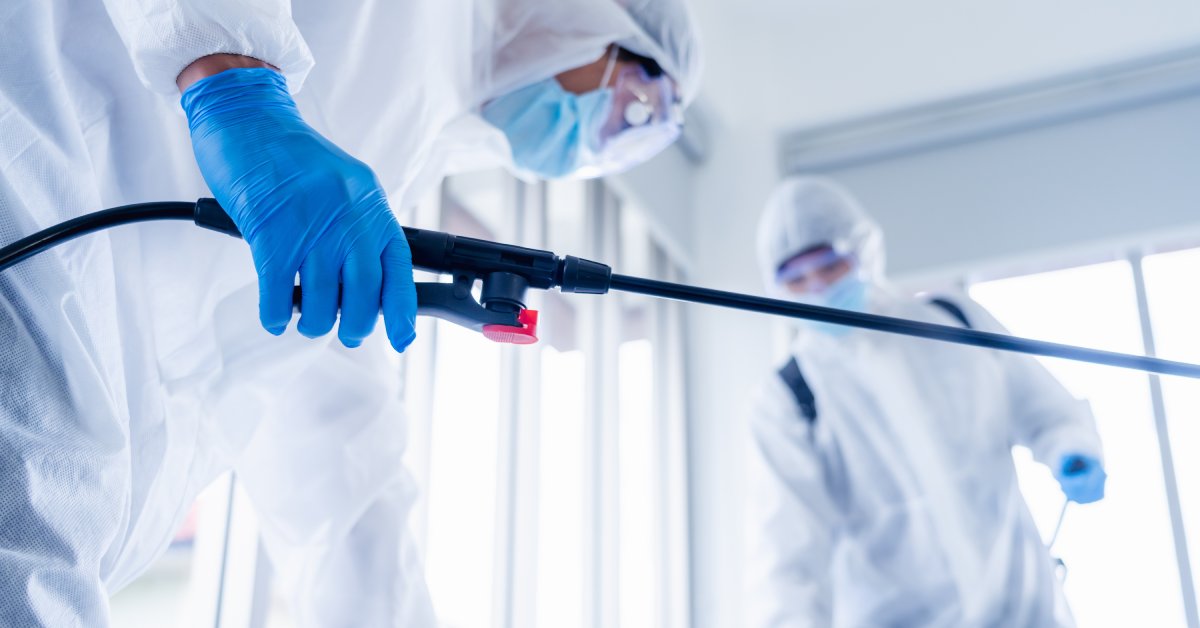
After a trauma or accident occurs, leftover biohazardous materials, such as blood and vomit, present unique challenges because their danger level changes over time. Some pathogens die quickly when exposed to air and light, while others can survive for months under the right conditions. This timeline variability makes proper assessment and cleanup essential for maintaining a safe environment.
Factors That Affect Pathogen Survival
Several environmental conditions determine how long bodily fluids remain harmful once exposed to the environment.
Temperature and Humidity
Temperature plays a significant role in pathogen survival. Warmer temperatures generally reduce survival times, while cooler conditions can extend the period that dangerous organisms remain viable.
Humidity levels also impact survival rates. Many viruses and bacteria thrive in humid conditions, which significantly extends their lifespan. Dry environments typically reduce survival times, though some pathogens are surprisingly resilient.
Surface Type and Light Exposure
Surface type matters considerably. Fabric, wood, and other porous materials can harbor pathogens longer than non-porous surfaces, such as metal or plastic. The material’s texture and composition create different environments that either support or inhibit pathogen survival.
Light exposure can be both helpful and harmful. While direct sunlight and UV radiation can kill many pathogens quickly, materials in dark, protected areas may harbor dangerous organisms much longer.
Specific Timelines for Pathogen Survival
Knowing the following approximate timelines for how long exposed bodily fluids remain harmful can guide cleanup and safety measures:
- Pathogens in dried blood, such as hepatitis B and HIV, can remain infectious for up to seven days, especially when moist and in cooler, shaded areas.
- Saliva typically loses most infectious potential within 24 hours once exposed to air and light, though some viruses, such as influenza, can survive slightly longer in humid environments.
- Urine is generally low risk, but pathogens, such as leptospirosis, can survive for several days in warm, moist conditions.
- Vomit can remain hazardous for 24–48 hours, depending on the presence of bacteria or viruses, such as norovirus.
- Certain hardy organisms, such as hepatitis A virus, norovirus, and some bacterial spores, such as Clostridium difficile, can survive in dried fluids or on surfaces for weeks or even months if conditions are favorable.
These timelines highlight why an immediate restoration is essential. Even when fluids appear dry or harmless, pathogens may still be present, making careful assessment and cleanup critical to maintaining a safe environment.
Understanding Long-Term Health Risks
Exposure to untreated bodily fluids can have lingering health effects if you don’t properly eliminate the pathogens. Some viruses and bacteria can cause chronic infections, while others may trigger allergic or respiratory reactions over time. Kids and individuals with compromised immune systems are especially vulnerable.
Taking Steps To Ensure Safety
Affinity Bio Solutions offers professional blood cleaning services in Arizona. With certified teams, advanced equipment, and strict safety protocols, we thoroughly disinfect and restore contaminated areas. Relying on our expertise lets you minimize the risk of pathogen exposure and protect your health.
